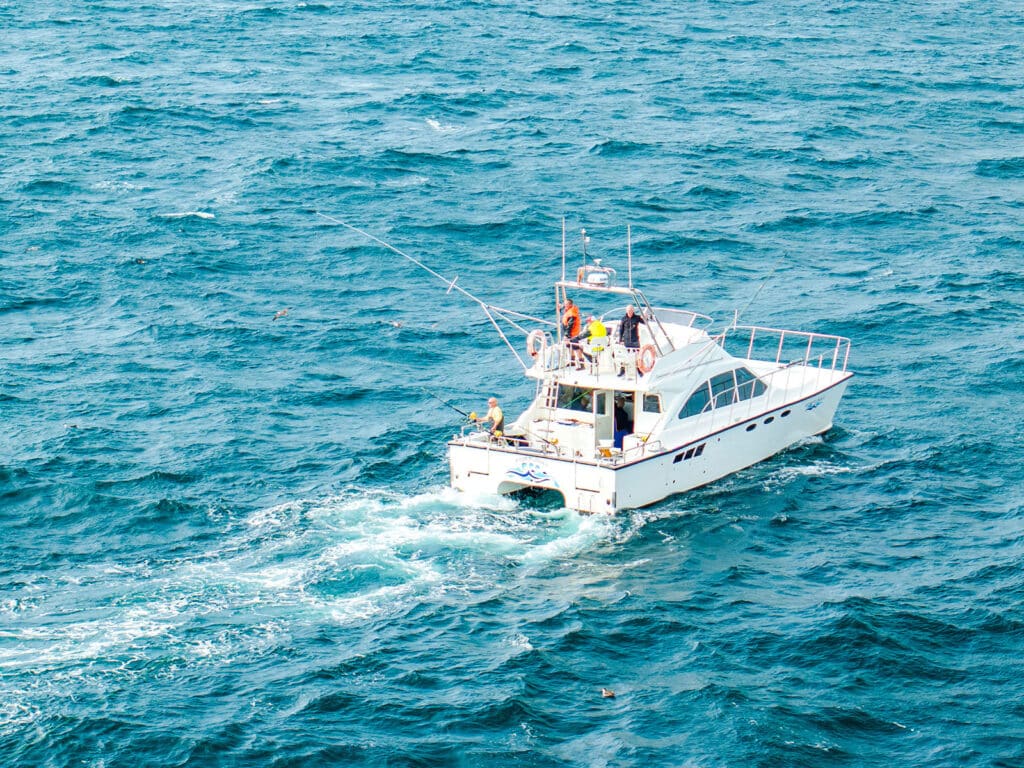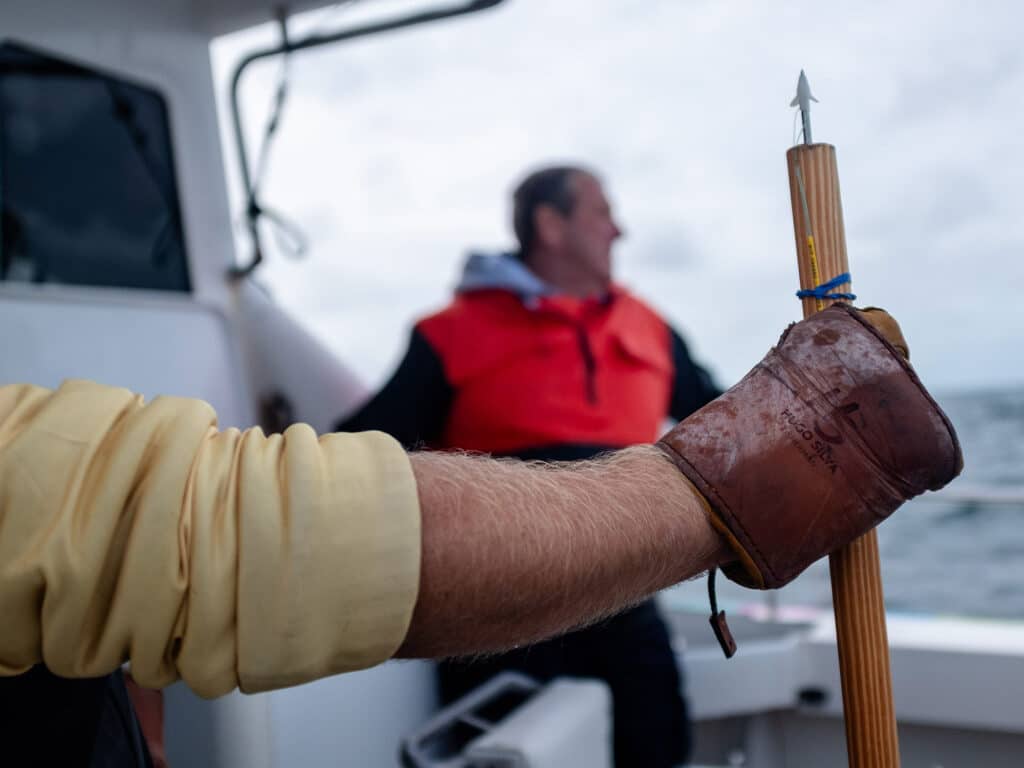
The Start Point Lighthouse sits out on a craggy peninsula flanked by the purple moor grasses and rush pastures of South Devon. On the hillside, a trio of sheep have sky blue circles painted on their backs to denote their ownership. It’s an elevated perch where each of the 360 degrees offers a spectacular view. But at the moment, the tourists and locals along the walking path are only looking down to the water, where giant bluefin tuna are smashing mackerel, creating explosions that get closer and closer to shore.
Did that bluefin just bust 50 yards from the beach? And as long as we’re italicizing questions, What is going on with the incredible resurgence of bluefin tuna in the United Kingdom?
The Start Point Lighthouse’s beacon can be seen in nearby Plymouth, one of the most storied maritime communities in the Western Hemisphere. After all, it is that Plymouth, the Mayflower Plymouth, the Plymouth that gave the rock in Massachusetts its name. Today, the coastal city in southwest England, which celebrated its 400th birthday in 2020, is the gateway to a growing bluefin fishery. Similar to the bluefin revival in Southern California, the numbers of Atlantic bluefin tuna in the waters off Europe, and the United Kingdom in particular, have increased significantly in recent years. It has inspired a recreational catch-and-release fishery where captains are tagging fish and serving as citizen scientists.
In 2021, the Centre for Environmental Fisheries and Aquaculture Science (Cefas) initiated the Catch and Release Tagging (CHART) program where a limited number of charter vessels are approved to tag-and-release bluefin to learn more about their movements and behavior. In 2022, the CHART program recorded 631 charter trips, 1,755 participating anglers, and 1,090 tagged fish.

Twenty-four charters were licensed tag-and-release vessels in 2023, one of which is Fortuna Charters, owned and operated by Capt. Mark Jury. His boat, Fortuna II, is a 41-foot fishing catamaran built for the sporty seas that the English Channel often serves up. But to the daring salt goes the spoils: In October 2022, Jury caught and released 94 fish in one 14-day stretch, including one day where he landed 17. That said, blue migrations are a mystery, so this phenomenon isn’t guaranteed to last.
Planning a Trip

When to Go: While details for the 2024 season have not been announced yet, as a general rule, the season runs from mid-August to mid-December.
Where to Go and How to Get There: Unless one has patience for purgatory, it’s best to avoid Heathrow and opt to fly into Gatwick instead. For our recent trip in October 2023, we flew direct from Orlando to London on American: an eight-hour flight. It’s a four-hour road trip through rolling hillsides to Plymouth. Don’t be surprised when in Hour Two you look out the car window and ask, “Isn’t that Stonehenge?” (Yes, it was Stonehenge. And the $30 ticket is worth it.) As you get closer to Plymouth, the streets get increasingly narrow until it’s just one-lane country roads bordered by hedgerows and stone walls, creating the most charming traffic jams you’ll ever experience.
Skip the hotels and inns if possible. Plymouth and the nearby towns of Noss Mayo and Newton Ferrers have surprisingly affordable Airbnb and VRBO rentals. While Plymouth is bigger and more industrial (dockyards, naval base, a population of 265,000), Noss Mayo and Newton Ferrers are quaint seaside villages straight out of a snow globe, both only 20 minutes from Plymouth Yacht Haven.
What to Expect: It’s downright gobsmacking to watch a man protected only by leather fishing gloves wire a 700-pound bluefin. “Ninety-nine inches!” Jury exclaims as he hangs over the gunwale to measure the giant. The tag—a thin, yellow tube—is placed below the base of the second dorsal fin. This would be the biggest of the 17 bluefin caught-and-released over four days.

Fortuna II is quite the comfy cat. Its 16-foot beam allows for a sizable salon with more perks than most charter boats. “Should I put a kettle on?” asks Andy, the mate. Everyone politely declines on Day One. By Day Four, the whole crew is enjoying tea, and sure I’ll have another biscuit, thank you very much.
While the trademark English gloom and fog took over some days, the weather was mostly beautiful, the seas bouncy but not uncomfortable. It’s stand-up fishing with 80- and 130-pound conventional reels clipped into a harness, with one eyelet clipped to the transom should a giant send you overboard. The CHART program forbids live bait, so it’s all artificials fished with spreader bars. Aside from bluefin, wildlife abounds in these waters. Shearwaters glide above the whitecaps following schools of mackerel. Minke, pilot and fin whales are common sights. Porpoise cruise and leap between the cat’s hulls while underway.
It’s all cool breezes and hot tea until—zzzzzzzzz!—the left long goes off. Then it’s choreographed chaos. Andy hastily clears the spreader bar. Jury descends from the bridge, belting joyful obscenities, acting as if it’s his first fish of season.
Helpful Links
- Visit Plymouth: visitplymouth.co.uk
- Cefas CHART program: cefas.co.uk/impact/programmes/chart
- Fortuna Charters: fortunacharters.com








